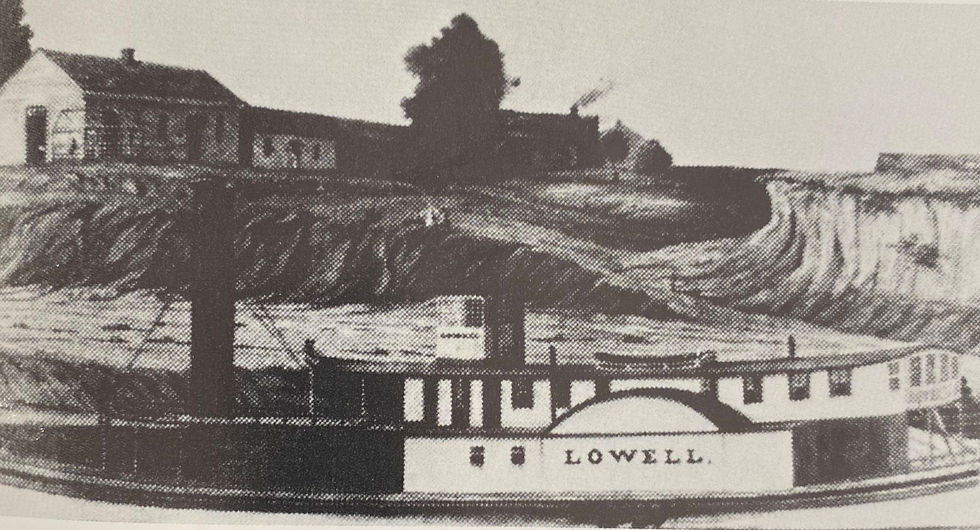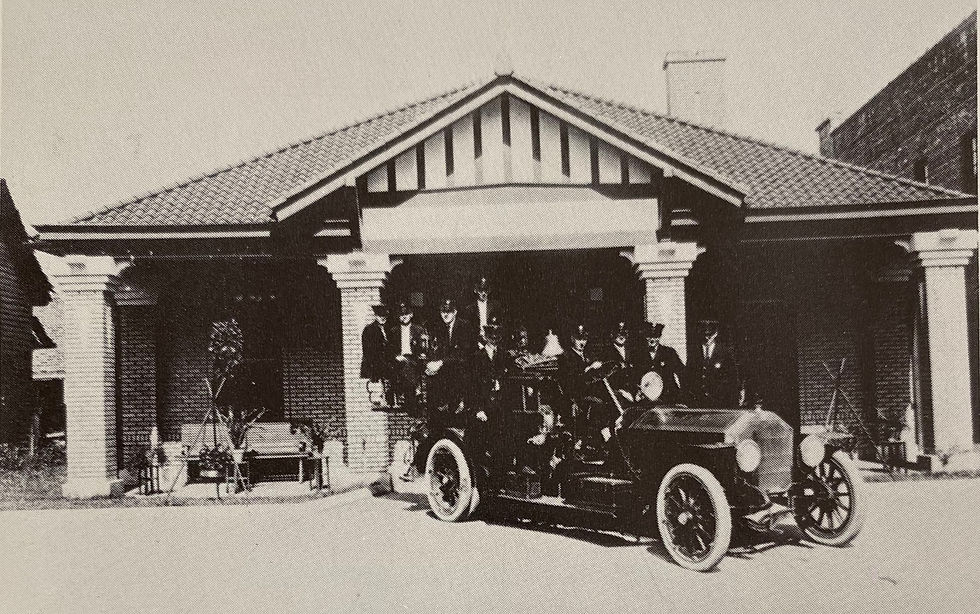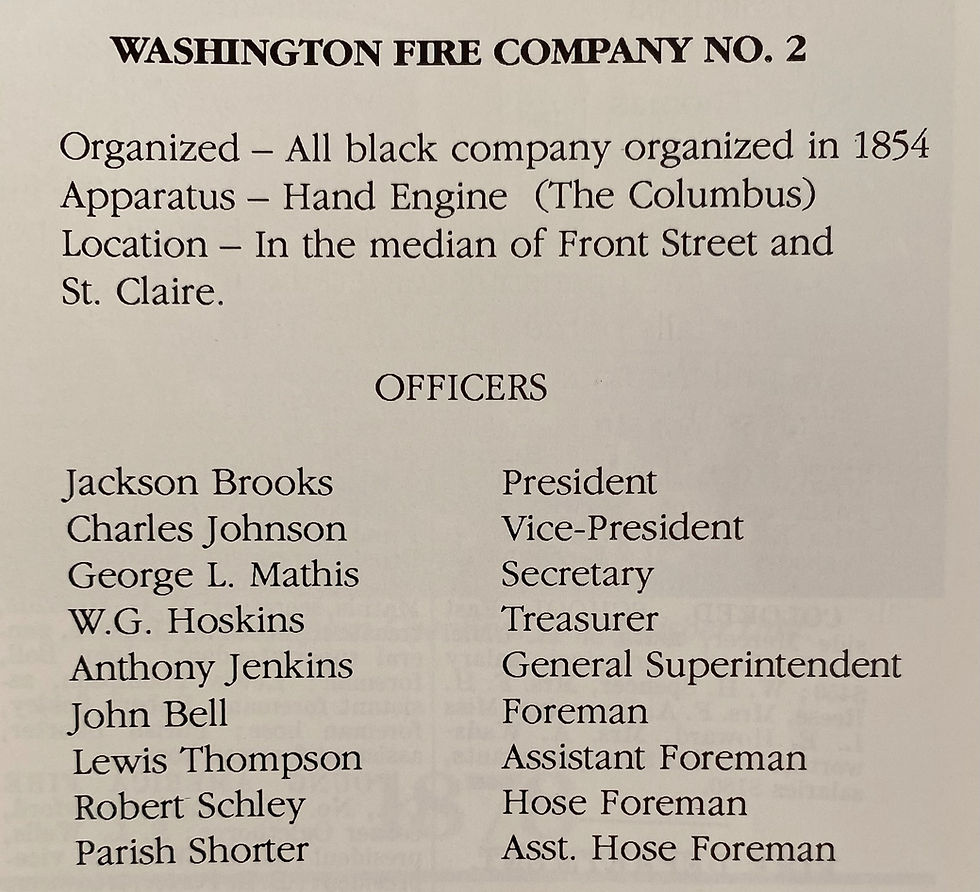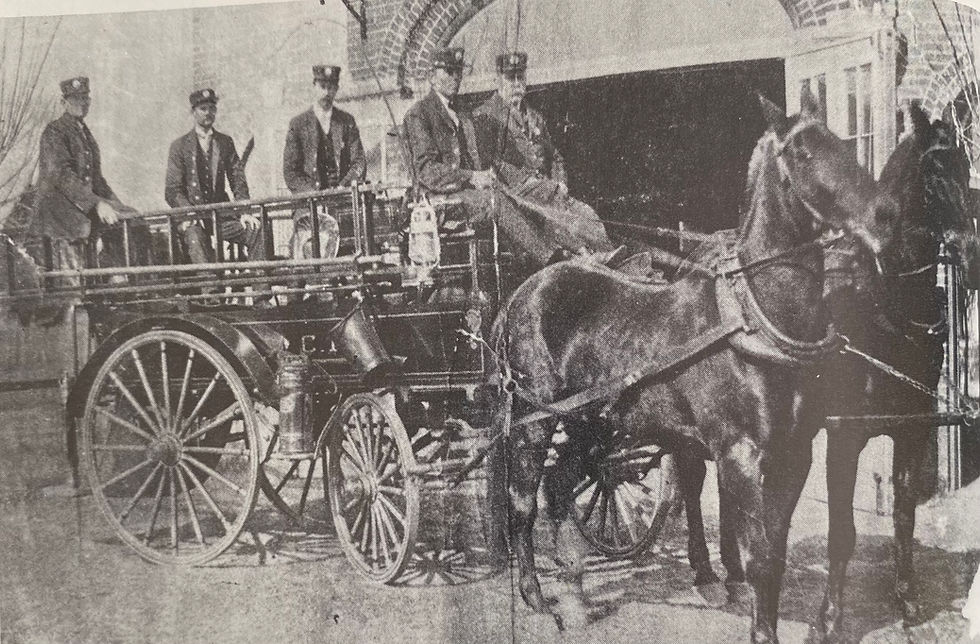Columbus Fire Department (Part One of Four)
- Historic Columbus
- Dec 3, 2020
- 4 min read
These history excerpts are taken from the book: Columbus Fire Department Commemorative Chronicle - A Hidden History by Virgil Frank Petty, Captain, No. 6 Fire Station
The Columbus Fire Department was exclusively volunteers for many decades beginning May 21, 1831. Grigsby E. Thomas was named the first Chief Engineer. The first fire fighters only nine men strong had a hand pump engine, wooden ladders, leather buckets, and a great "Esprit de Corps." The small group was enthusiastic and made the town aware of its plans to serve and protect. Five years later in 1836, a committee was appointed to order two fire engines from the north. Thus was born the Columbus Fire Department.

One of the department's earliest champions came to Columbus in 1840 on a northbound steamboat. The new town infatuated the young voyager and Henry Thomas Hall made Columbus his home.
By 1843, Hall had accumulated enough wealth to build his own ship which he named the Lowell, for his native state of Massachusetts. Soon cotton from west Georgia and east Alabama filled the warehouses in the city and was shipped down river to Apalachicola, Pensacola, Boston, New York, and England. World markets immediately opened in demand of cotton.

In 1842, Hall’s cotton enterprise was struck by disaster, Columbus’ first great fire. The blaze which occurred destroyed warehouses and hundred of bales of cotton belonging to Hall, a loss of $60,000. As a result of the fire, Henry Hall became very active in the Columbus Fire Department. His name would be added to the roll of the Columbus Hook & Ladder Company. In 1844, the department elected Henry Hall as Chief Engineer. He remained Chief Engineer of the Columbus Fire Department until 1847. Hall’s ship, the Lowell, would sink below Fort Gaines with cargo aboard in 1845. While extremely distraught at the loss, this setback steeled Henry Hall to develop Columbus into a ship building center and he vowed to preserve earnings at home and give employment to the citizens of Columbus. His words were: To keep at home the thousands we spend with her and to give employment to our own mechanics. Thus, was born the Iron Works, the textile industry, and the W. C. Bradley Co. Hall's daughter, Sarah, married W.C. Bradley, and Bradley continued the tradition of steamboating into the next century.

Station No. 1 was the parent company of the fire department. It was the first to be organized in 1831 and was then reorganized in 1843 under the leadership of William S. Chipley and Henry T. Hall. It was at this time that the fire company was recognized by an act of the Georgia State Legislature and it had approximately 75 members.
It is recognized as Hook & Ladder Company No. 1. “Prompt to Aid in Time of Need” was Station No. 1's motto. The first company building was originally located at 11th Street and Front Avenue (1844 – 1854). It would be moved four more times:
Broadway Median at 13th Street, pictured above, demolished (1854 - 1920)
1228 Broadway, pictured below (1920 – 1948)
1424 Fourth Avenue, demolished (1948 - 1984)
201 10th Street (1984 – Present)

In 1854, a severe fire happened again that would threaten the prospering city. The fire occurred on July 24th, near the Palace Mills and the Eagle Factory on the river front. It spread quickly to surrounding properties. Help was sought from citizens living in the nearby commons. Free black citizens resided in the South Commons and on several occasions, they had been called upon to assist in fighting fires in the city. At this certain fire, the black residents (young and old) formed a double line bucket brigade east on Front Street to the river. They were promised $200 if a house near 9th Street could be saved from catching fire. If it did, the fire would spread through the original city and to the South Commons. The house was saved and the promise was kept. As the fire was raging, a gentleman watched the gallant actions of the town’s black citizens. He paid tribute to them at the next City Council meeting and recommended they be given their own fire station, equipment, and to elect their own officers. The station was located at 11th Street and Front Street, and the engine was the Columbus. The man was Henry T. Hall and the company became known as Washington Fire Company No. 2. Below is the list of Officers from 1880.

Station No. 2 was originally established in 1848 and was located at 1217 First Avenue. It was called Vigilant Fire Co. No. 2. Vigilant was then moved the former home of Station No. 1 in 1854. This station house also became the home of the Washington Fire Company. Station No. 2 and both companies remained at the 11th Street and Front Avenue location until 1898 when all volunteer fire companies were disbanded to create a full-time paid force. (***note: Vigilant and Washington Companies are sometimes referred to separately in Captain Petty's book and sometimes they are grouped as one under Vigilant No. 2.) Washington Fire Company No. 2 was an indispensable force which other fire companies respected and admired. 52 members represented the vigilant company, all of which were ever willing and always alert when called to duty. A new building for Station No. 2 would be built in the Rose Hill neighborhood (903 23rd Avenue, pictured below) in 1903. The station would stay there until 1948 when a new station was constructed in Jordan – Johnson (1347 29th Street). Their current station home is located at 1045 33rd Street just north of Waverly Terrace.

Next Week: We will cover the history of Stations 3 - 5, along with spotlights on Leonard's Spring, the Fire Department's role in the Civil War, and the Bell Tower.

You can access ALL of Historic Columbus' History and Preservation Spotlights here: www.historiccolumbus.com/blog




Comments